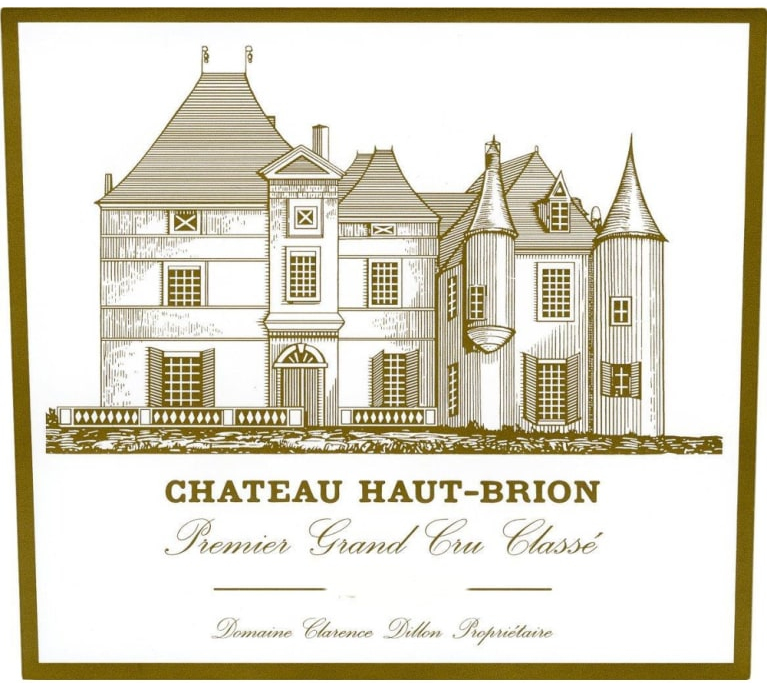Château Haut-Brion 2009
Review of the Estate
Château Haut-Brion is notable for its First Growth status, under both the 1855 and 1973 Mèdoc classifications, despite its geographical location in Graves. This mark of respect is due to the obsession with quality and continual winemaking improvements that have been the dominant modus operandi at Chateau Haut Brion over the past four centuries.
The modern estate grew from humble origins as a property known as Maison Noble d'Aubrion which was acquired by Jean de Pontac through his marriage to Jeanne de Bellon in 1525.
Pontac was responsible for expanding Chateau Haut-Brion, and creating an international market for the wines, the quality of which was noted by Samuel Pepys who wrote in April 1663,"here I drank a sort of French wine, called Ho Bryan, that hath a good and most particular taste that I never met with." However, Chateau Haut Brion was still known formally as Château Pontac until the late 18th Century when it eventually passed out of the Pontac family's hands.
As the first recorded First Growth to be imported into the United States, when Thomas Jefferson purchased six cases during his travels and sent them back to his home in Virginia, it is perhaps unsurprising that Chateau Haut-Brion was eventually purchased by an American. After a string of owners, financier Clarence Dillon acquired the estate in 1935. Chateau Haut Brion is currently owned by Domaine Clarence Dillon, which is a limited company and thereby prevents excessive divisions of the estate between successive generations. Presently, Prince Robert of Luxembourg is at the helm, with Jean-Philippe Delmas managing the viticultural aspects of the business.
As a First Growth, there is constant pressure to produce outstanding yet consistent wines and Château Haut-Brion has consistently embraced new technologies to meet this standard. In the 1960s, the estate pioneered the installation of stainless steel vats - the first of the First Growths to do so. This increased the reliability of the vinification process and positioned Chateau Haut Brion at the forefront of innovation in the Bordeaux region, producing a savoury wine which is both rich and intricate.

Vineyard
Surface area: 106.7 acres
Grape Varieties: 45% Cabernet Sauvignon, 37% Merlot and 18% Cabernet Franc
Average age of vines: 36 years
Density of plantation: 8,00 vines per hectare
Average yields: 35-45 hectoliters per hectare
Average cases produced: 11,000 per year
Plateau of maturity: 10 - 40 years
Château Haut-Brion 2009 Reviews / Tasting Notes
Robert Parker - The Wine Advocate
Point Score: 100
What a blockbuster effort! Atypically powerful, one day, the 2009 Haut-Brion may be considered to be the 21st century version of the 1959. It is an extraordinarily complex, concentrated effort made from a blend of 46% Merlot, 40% Cabernet Sauvignon and 14% Cabernet Franc with the highest alcohol ever achieved at this estate, 14.3%. Even richer than the perfect 1989, with similar technical numbers although slightly higher extract and alcohol, it offers up a sensational perfume of subtle burning embers, unsmoked cigar tobacco, charcoal, black raspberries, wet gravel, plums, figs and blueberries. There is so much going on in the aromatics that one almost hesitates to stop smelling it. However, when it hits the palate, it is hardly a letdown. This unctuously textured, full-bodied 2009 possesses low acidity along with stunning extract and remarkable clarity for a wine with a pH close to 4.0. The good news is that there are 10,500 cases of the 2009, one of the most compelling examples of Haut-Brion ever made. It requires a decade of cellaring and should last a half century or more. Readers who have loved the complexity of Haut-Brion should be prepared for a bigger, richer, more massive wine, but one that does not lose any of its prodigious aromatic attractions.
Wine Spectator
Point Score: 97-100
A dark and brooding wine, delivering blackberry, black licorice, mahogany, subtle grilled meat and raspberry jam. Full-bodied, with layers of ripe and chewy tannins. Loads of fruit yet subtle and reserved, and a long, long finish. Super fruit, yet held back. A 2005 in the remaking, but perhaps slightly supercharged. Score range: 97-100
Stephen Tanzer - Vinous
Point Score: 97-100
(46% merlot, 40% cabernet sauvignon and 14% cabernet franc; a 57% selection; 14.3% alcohol) Saturated bright ruby. The deep, brooding nose is quite marked by the cabernet franc presence, opening slowly with air to offer sexy, soil-driven aromas of violet, raspberry, mocha, minerals and sweet spices. Then rich and sweet in the mouth but with outstanding minerality and enticing violet lift to the ripe red cherry, raspberry, cocoa and black pepper flavors. Offers a stunning combination of concentration, density and balance; as backward and reserved as this wine is today, it manages to come across as graceful. The endless palate-staining finish is loaded with sweet, ripe tannins and an exhilarating note of floral black pepper. This wine made me think of what a blend of the great '89 and '05 Haut-Brions might taste like.